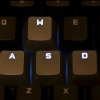-
Posts
4,080 -
Joined
-
Last visited
Reputation Activity
-
 johnt got a reaction from will0hlep in New SSD missing 200GB
johnt got a reaction from will0hlep in New SSD missing 200GB
Hope you do too! 🙂 No offense taken from your excellent post. Sometimes folks aren't interested in that much info and they are just making sure nothing is broken. But there ain't nothing wrong with sharing the information for the edification of everyone reading it.
-
 johnt got a reaction from Blasty Blosty in New SSD missing 200GB
johnt got a reaction from Blasty Blosty in New SSD missing 200GB
Yes that is normal for 2 TB rated drives to have 1.8 TB of useable space. I have two in my NAS and that's how much capacity I have. Neither is a boot drive, which would reduce the useable space even more.
-
 johnt got a reaction from Deni_I in New SSD missing 200GB
johnt got a reaction from Deni_I in New SSD missing 200GB
Yes that is normal for 2 TB rated drives to have 1.8 TB of useable space. I have two in my NAS and that's how much capacity I have. Neither is a boot drive, which would reduce the useable space even more.
-

-
 johnt got a reaction from Latvian Video in HDR400 vs HDR10
johnt got a reaction from Latvian Video in HDR400 vs HDR10
HDR400 is a VESA standard for the expected peak brightness of a screen. It basically helps consumers figure out how "good" a panel is by a simple measurement of peak brightness in HDR mode. There is HDR400, HDR600, and HDR1000. The higher the number, usually the better the HDR experience. Before this, there was no standard method of determining brightness and comparing between displays. Manufacturers could report whatever they wanted in the brightness measurements. And technically they still can. But unstandardized testing would mean they cannot use the HDR400/600/1000 logos and advertise it. So if you do not see these logos advertised on a product, then the brightness claims might be determined in a different way that could bump up the numbers.
HDR10 is an HDR standard. It is not a measurement of anything the television can produce. HDR10 is a free alternative to Dolby Vision HDR. These are standards that panels can support... a simple yes or no. Most monitors only support HDR. Dolby Vision is typically found on higher end television products from LG and Sony. No, not Samsung. HDR10+ is another standard that is supposed to mimic Dolby Vision a little better, but I have not seen a huge differentiation between HDR10 and HDR10+ in terms of content.
-
 johnt got a reaction from 3llyas in HDR400 vs HDR10
johnt got a reaction from 3llyas in HDR400 vs HDR10
HDR400 is a VESA standard for the expected peak brightness of a screen. It basically helps consumers figure out how "good" a panel is by a simple measurement of peak brightness in HDR mode. There is HDR400, HDR600, and HDR1000. The higher the number, usually the better the HDR experience. Before this, there was no standard method of determining brightness and comparing between displays. Manufacturers could report whatever they wanted in the brightness measurements. And technically they still can. But unstandardized testing would mean they cannot use the HDR400/600/1000 logos and advertise it. So if you do not see these logos advertised on a product, then the brightness claims might be determined in a different way that could bump up the numbers.
HDR10 is an HDR standard. It is not a measurement of anything the television can produce. HDR10 is a free alternative to Dolby Vision HDR. These are standards that panels can support... a simple yes or no. Most monitors only support HDR. Dolby Vision is typically found on higher end television products from LG and Sony. No, not Samsung. HDR10+ is another standard that is supposed to mimic Dolby Vision a little better, but I have not seen a huge differentiation between HDR10 and HDR10+ in terms of content.
-
 johnt got a reaction from 3llyas in HDR400 vs HDR10
johnt got a reaction from 3llyas in HDR400 vs HDR10
I mean HDR10 doesn’t talk about brightness. I think you be fine with nearly any modern monitor in a dark environment. HDR10 just means it supports HDR signal.
-
 johnt got a reaction from Needfuldoer in Experiences with returns?
johnt got a reaction from Needfuldoer in Experiences with returns?
Amazon is usually pretty good, like 99% of the time. I've only been questioned once and that was like 8 years ago when I returned two Crown amps.
I've made one return at Newegg in about 2017 or 2018. I purchased a used monitor and it had all sorts of issues. The website wanted me to pay for return shipping, but I called them, explained my situation, and the phone rep immediately offered to refund and provide a shipping label. It was my only return.
B&H I have no return experience with, but they are a very reliable and honest company. I have purchased many items from them. I am sure they will refund your purchase without issue especially if you haven't opened the product. They are closed when they say they are closed, though. They take their religious holidays very seriously (so does Adorama). So don't expect an immediate processing of your return until they reopen.
But honestly. You're not supposed to have this many issues with products lol Somehow receiving a faulty CPU is basically like getting hit with lightning. AMD and Intel are gods at making CPUs. I think Amazon is going to refund you anyway, but it's hard for me to accept this one. Also, a $300 PSU that had arcing issues??? How did you come to this conclusion, and don't tell me it was the arc faults they are installing in newer homes.
-
 johnt got a reaction from Blasty Blosty in HDR400 vs HDR10
johnt got a reaction from Blasty Blosty in HDR400 vs HDR10
HDR400 is a VESA standard for the expected peak brightness of a screen. It basically helps consumers figure out how "good" a panel is by a simple measurement of peak brightness in HDR mode. There is HDR400, HDR600, and HDR1000. The higher the number, usually the better the HDR experience. Before this, there was no standard method of determining brightness and comparing between displays. Manufacturers could report whatever they wanted in the brightness measurements. And technically they still can. But unstandardized testing would mean they cannot use the HDR400/600/1000 logos and advertise it. So if you do not see these logos advertised on a product, then the brightness claims might be determined in a different way that could bump up the numbers.
HDR10 is an HDR standard. It is not a measurement of anything the television can produce. HDR10 is a free alternative to Dolby Vision HDR. These are standards that panels can support... a simple yes or no. Most monitors only support HDR. Dolby Vision is typically found on higher end television products from LG and Sony. No, not Samsung. HDR10+ is another standard that is supposed to mimic Dolby Vision a little better, but I have not seen a huge differentiation between HDR10 and HDR10+ in terms of content.
-
 johnt reacted to ChrisLoudon in HDR400 vs HDR10
johnt reacted to ChrisLoudon in HDR400 vs HDR10
Vanilla HDR is sometimes referred to as HDR10.
HDR 10+ and Dolby Vision are somewhat comparable as their HDR meta data is dynamic.
HLG is HDR for broadcast services like SkyQ in the UK.
HDR400, 600, 800, 1000..... is really the display manufacture shouting about the peak brightness of their display (in Nits). The brighter the better really but don't pay much attention to that as there will be lots of other factors.
I have a Philips Momentum display that has an HDR1000 setting. HDR on this screen is utter garbage!
-
 johnt got a reaction from ChrisLoudon in HDR400 vs HDR10
johnt got a reaction from ChrisLoudon in HDR400 vs HDR10
HDR400 is a VESA standard for the expected peak brightness of a screen. It basically helps consumers figure out how "good" a panel is by a simple measurement of peak brightness in HDR mode. There is HDR400, HDR600, and HDR1000. The higher the number, usually the better the HDR experience. Before this, there was no standard method of determining brightness and comparing between displays. Manufacturers could report whatever they wanted in the brightness measurements. And technically they still can. But unstandardized testing would mean they cannot use the HDR400/600/1000 logos and advertise it. So if you do not see these logos advertised on a product, then the brightness claims might be determined in a different way that could bump up the numbers.
HDR10 is an HDR standard. It is not a measurement of anything the television can produce. HDR10 is a free alternative to Dolby Vision HDR. These are standards that panels can support... a simple yes or no. Most monitors only support HDR. Dolby Vision is typically found on higher end television products from LG and Sony. No, not Samsung. HDR10+ is another standard that is supposed to mimic Dolby Vision a little better, but I have not seen a huge differentiation between HDR10 and HDR10+ in terms of content.
-
 johnt got a reaction from Herodotus in First-Time Building a NAS/Home Server
johnt got a reaction from Herodotus in First-Time Building a NAS/Home Server
They seem largely similar, except the CPU and motherboards. The 12400 config is about $100 less, and that's mostly because of the motherboard. Neither one of these configurations will fit into the Jansbo N2 from your original post, but that's probably why you added another case. The N2 requires a mini ITX board, unfortunately. The ASUS motherboard is the same one that I use in my NAS.
I think you would normally get a lot of push back from other forum members about wasting money on an k-sku Intel chip that can overclock. Unless you have a direct need for it, you really don't need that much horsepower in a home NAS/server. I agree that a slow chip is not ideal either, but the 12400 is a perfect balance in my opinion. Plus, the 12600k does not come with a cooler. That's another cost.
The only suggestion I have is to skip the Crucial drive and look for an Intel drive instead. I've had nothing but great experiences with Intel drives, and the P3 Plus just does not perform the same. The Intel 670p 2TB is what I use in mine. The 1TB model will be just as good. I use it a lot to transfer files quickly to my NAS over the network, and then copy them to the SATA drives overnight.
I don't have enough experience with modern Seagate spinning drives to answer this question. In the past, I've had nothing but bad experiences with Seagate drives. I have never had a premature failure, but I did have instability (in the Windows 95/98 era), louder devices, poor performance, freezing, more frequent bad sectors. I think the reason I didn't have a premature failure is I just had to replace them before they could fail lol. I've just learned to avoid them. I bought a 5400rpm 2.5" drive for an Intel NUC about five years ago and the performance was so bad I just never used it. I did use the drive in a simple NAS situation and that served faithfully for years, but it was just on all the time and infrequently used... but it did keep the data! I'm sure there 7200rpm NAS products are better but I'm too jaded on this brand lol
Western Digital drives are my go to. They are all very expensive and using something like RAID1 for redundancy is just double the expense! I actually started looking for used drives on Amazon. I found a seller who has 2 TB drives for $29 each, and they had less than 30 days of use with manufacture dates from 2016 and 2017. They are performing perfectly in RAID1. My goal is to upgrade to much larger capacities in the future, but so far my 2 TB drives are serving me well. I can send you a link if you're interested. I have no affiliation with the seller and your drives may be wildly different than mine. For me, it was a fun starter "who cares what happens" project that seemed to work and I got the kinks out and it's just been working just fine.
-
 johnt got a reaction from Herodotus in First-Time Building a NAS/Home Server
johnt got a reaction from Herodotus in First-Time Building a NAS/Home Server
Go for an i5 12400 with 32 GB of memory. Make sure the CPU has an integrated GPU. This will save you money if you are not planning to purchase a dedicated GPU right away. You may never need to if your CPU has it.
Buy the cheapest brand name motherboard you can find (AsRock, ASUS, MSI, etc.) that has the number of SATA ports you need and at least one NVME/M.2 port. Also consider if you need a 2.5 Gbps NIC onboard. They are very inexpensive to add on later if you need to improve your bandwidth speeds in the future. The other thing is the case you are going to build in. The N2 requires a mini ITX board, so that is going to be a significant cost just for the form factor.
-
 johnt got a reaction from Beardz in Trying to fix my UniFi USW 48 power supply
johnt got a reaction from Beardz in Trying to fix my UniFi USW 48 power supply
Diagnosis is truly an art. But the fear mongering on this forum just for opening your PSU is on another level. Last year I was in an argument for swapping my PSU fan that was making a very loud bearing sound under load. It was a five minute job with a simple mini fan connector. It's not helpful to tell people they are going to die if they open their PSU. That doesn't fix problems... just creates e-waste. I could have easily bought a new PSU to get rid of the noise but it was a $20 fan.
-
 johnt reacted to emosun in Why Is Digital Accepted On PC And Not Console???
johnt reacted to emosun in Why Is Digital Accepted On PC And Not Console???
it's accepted more on pc because media preservation on pc is easier than console. it's not hard to obtain movies/tv shows or games when sailing the high seas.
closed ecosystems like consoles it's less accepted due to basically being at the mercy of microsoft/sony/nintendo
then you did what the majority of people on earth did except instead of moving from a pc to a cell phone you went from pc to mac/console. so not really unique in that aspect.
-
 johnt got a reaction from kaiju_wars in Corsair Thermal Paste?
johnt got a reaction from kaiju_wars in Corsair Thermal Paste?
50 is the way to go if you need quantity.
-
 johnt reacted to kaiju_wars in Corsair Thermal Paste?
johnt reacted to kaiju_wars in Corsair Thermal Paste?
I'll get the 50, cause I'll be using it for other things too, just wanted to make sure, appreciate the help!
-
 johnt got a reaction from kaiju_wars in Corsair Thermal Paste?
johnt got a reaction from kaiju_wars in Corsair Thermal Paste?
30 is all you need. 50 seems like advertising but it’s a bigger quantity, which is the biggest difference in my review. 70 is an intermediate volume and comes with applicators and cleaning wipes. Wouldn’t recommend 50 or 70 if you are doing less than five CPUs.
-
 johnt got a reaction from HanZie82 in Corsair Thermal Paste?
johnt got a reaction from HanZie82 in Corsair Thermal Paste?
30 is all you need. 50 seems like advertising but it’s a bigger quantity, which is the biggest difference in my review. 70 is an intermediate volume and comes with applicators and cleaning wipes. Wouldn’t recommend 50 or 70 if you are doing less than five CPUs.
-
 johnt got a reaction from Poinkachu in Corsair Thermal Paste?
johnt got a reaction from Poinkachu in Corsair Thermal Paste?
30 is all you need. 50 seems like advertising but it’s a bigger quantity, which is the biggest difference in my review. 70 is an intermediate volume and comes with applicators and cleaning wipes. Wouldn’t recommend 50 or 70 if you are doing less than five CPUs.
-
 johnt got a reaction from WhitetailAni in Corsair Thermal Paste?
johnt got a reaction from WhitetailAni in Corsair Thermal Paste?
30 is all you need. 50 seems like advertising but it’s a bigger quantity, which is the biggest difference in my review. 70 is an intermediate volume and comes with applicators and cleaning wipes. Wouldn’t recommend 50 or 70 if you are doing less than five CPUs.
-
 johnt got a reaction from OddOod in Corsair Thermal Paste?
johnt got a reaction from OddOod in Corsair Thermal Paste?
30 is all you need. 50 seems like advertising but it’s a bigger quantity, which is the biggest difference in my review. 70 is an intermediate volume and comes with applicators and cleaning wipes. Wouldn’t recommend 50 or 70 if you are doing less than five CPUs.
-
 johnt got a reaction from Somerandomtechyboi in Corsair Thermal Paste?
johnt got a reaction from Somerandomtechyboi in Corsair Thermal Paste?
30 is all you need. 50 seems like advertising but it’s a bigger quantity, which is the biggest difference in my review. 70 is an intermediate volume and comes with applicators and cleaning wipes. Wouldn’t recommend 50 or 70 if you are doing less than five CPUs.
-
 johnt reacted to Alex Atkin UK in Trying to fix my UniFi USW 48 power supply
johnt reacted to Alex Atkin UK in Trying to fix my UniFi USW 48 power supply
While replacing a few capacitors is not complicated, knowing they were actually the cause of the problem and not a symptom of a greater problem elsewhere IS complicated.
-
 johnt got a reaction from Armymen in New build NAS CPU - i5-12600K vs i5-14500 ? 12 gen CPU vs a 14 gen CPU???
johnt got a reaction from Armymen in New build NAS CPU - i5-12600K vs i5-14500 ? 12 gen CPU vs a 14 gen CPU???
I run my Plex server from a Windows PC and the usage always spikes to 100% during transcoding. I don't see the fate of a 12600k being much different.
I'm getting curious about unraid and truenas just to see the differences.















